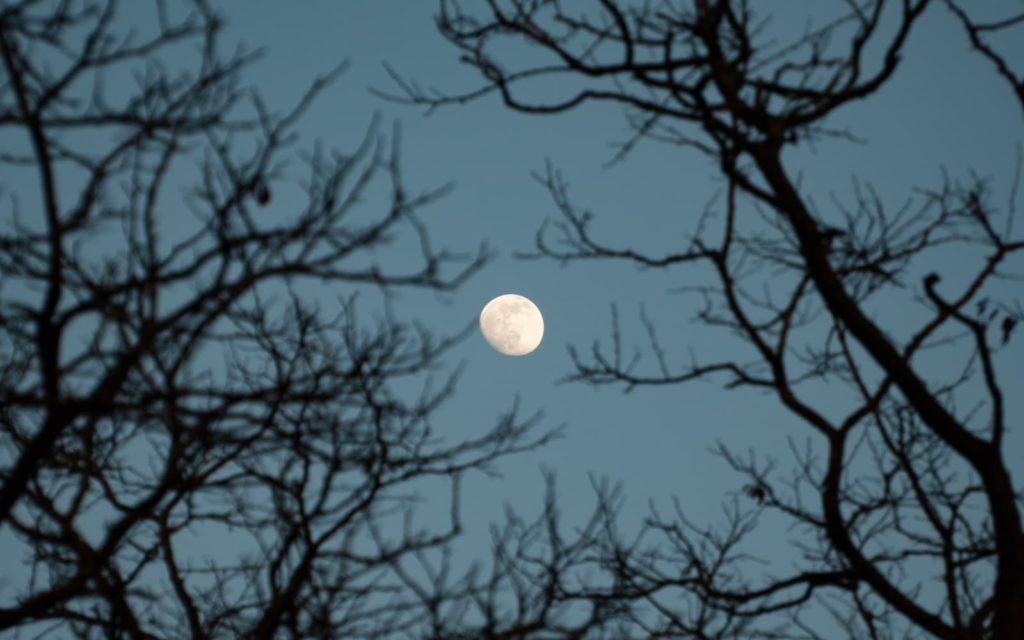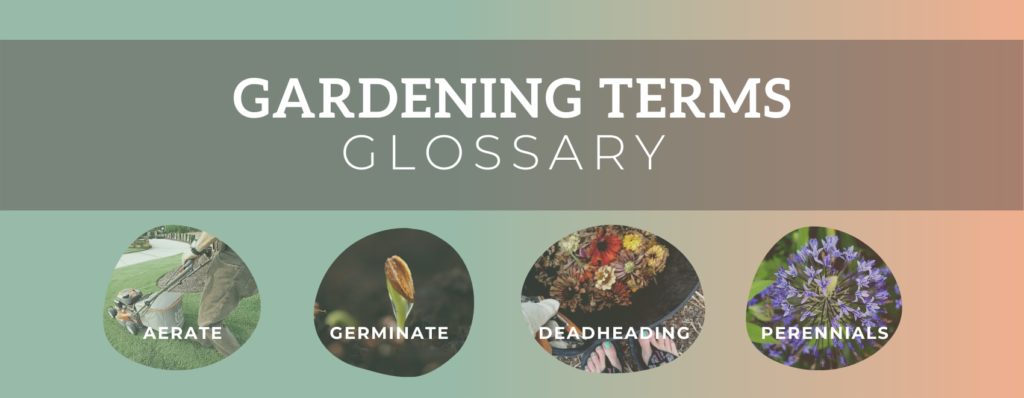Are you planning to try gardening by the moon? The phases of the moon and its placements can help you have a fruitful harvest because they affect the moisture of the soil. This practice has been around ever since human beings started growing their own food.
If you want to align your gardening activities with the lunar chart, check out our quick and simple tips for gardening by the moon!
What is Gardening by the Moon?
Planting by the moon, also known as moon phase gardening or gardening by the moon, refers to gardening based on the lunar cycle.
Farmers during the early civilizations believed that the gravitational pull of the moon keeps the soil moisturized during the new to a full moon, just as it affects the tides of the oceans.
Gardening by the moon has been passed on from generation to generation, proving that gardening and astrology are interrelated. The design of the garden even mirrors the organization of the cosmos.
Before getting started with lunar planting, it’s important to note the four main stages of the moon cycle. The new moon is invisible because the sun is blocked by the Earth, hindering light reflection. The waxing moon is where the moon appears in a crescent to a half-moon. What follows is the full moon, then the waning moon where the moon gets smaller again.
This lunar cycle, which has four phases, takes 29 ½ days to finish.
Creating an astrological garden through gardening by the moon may seem like a sophisticated method, but you just have to remember the moon gardening calendar and do your research on the planetary correspondence with what you are planting.
Tips for Gardening by the Moon
Let’s take a look at these basic tips on how to garden by the moon.
1. Consider the Moonlight
The gravitational pull of the moon is not the only factor that influences your plants. The amount of moonlight also influences their growth.
This means that different plant types perform differently based on which part of the lunar chart we’re in. We can categorize them as fruits with seeds on the outside, root vegetables, and fruits with seeds inside.
2. During the Waxing Moon
In this phase, the soil is not too fertile and the moisture levels are just adequate since the moisture is pulled upwards. This does not mean you shouldn’t plant during the waxing moon. Take advantage of the increased moonlight through foliage development.
You can plant during the waxing moon phase, specifically three days before the full moon appears.
The best plants to grow are those whose seeds are found inside the fruit since the moisture is found at the soil’s surface. Squash, beans, tomatoes, and peppers are some great examples.
Above-ground crops can also be planted when the moon is waxing, while leafy annuals can be transplanted as well. Avoid root crops during this time!
The waxing moon is also a good time to use liquid fertilizer, graft, or prune to make your plants grow more quickly.
3. During the Waning Moon
The waning moon is the phase with the most vulnerable gravitational pull and moonlight. Take this season as your resting phase. Try fertilizing, harvesting, pruning, and transplanting during this season instead of just planting.
Solid fertilizers and compost are a great idea, along with pruning dormant plants. Harvesting during the waning moon will not make the crops rot right away.
Because roots grow downward during this season, some plant root crops like beets, onions, carrots, and radishes. Others try flowering bulbs like tulips, daffodils, and iris.
4. During the New Moon
Try planting during the new moon because the moisture levels are high during this time. The seeds germinate and grow healthily as the moonlight increases every day. Such growth is also balanced.
Try planting celery, cauliflower, and broccoli during the new moon. Lettuce, spinach, cabbage, and other crops that are outside of the fruit are also the best plants during this season. Any plant where we eat or value the stem can also be planted during this phase.
5. The First Quarter Phase
The first quarter of the moon is when it is 90 degrees far from the sky or already ¼ of its way around the Earth.
The first quarter phase is the best time to plant fruiting annuals where the seed-bearing part of the plant or the fruit is valued. Remember that fruiting annuals are not the same as fruit trees.
Broccoli, beans, pumpkins, and tomatoes are the best seeds to plant.
6. Full Moon
Planting root vegetables is how you can maximize the full moon because the moisture levels are increasing while the moonlight is decreasing. Root vegetables include beets, potatoes, carrots, and rutabagas.
Perennials and bulbs can also be planted during this time in the cycle due to the unique lunar energy being pulled to root crops.
7. Last Quarter Phase
The last quarter of the moon is when the moon is at its last quarter of revolving around the earth.
Avid planting during this time. Just focus on putting your soil at its best state with the help of compost and manure teas. This is also the most favorable stage to weed, mulch, and deal with pests.
8. During a Blue Moon
A full blue moon is not necessarily blue, but it is the second full moon of a calendar month. A month does not always experience two full moons. It only occurs every two to three years.
The best plants to grow during a blue moon are the same plants you would grow during a full moon, such as root vegetables, perennials, and bulbs.
9. Plant When the Moon is in a Water or Earth Sign
Planting based on the moon phases isn’t enough. You also need to dive deeper into the zodiac signs. Here, the moon is half-lit and half-hidden.
The moon passes all the twelve signs as it journeys around the Earth. A simple gardening principle based on the lunar calendar is to plant when the moon is in a water or earth sign while in a waxing phase. These include Taurus, Virgo, Capricorn, Cancer, Scorpio, and Pisces.
10. Skip Planting When the Moon is in an Air or Fire Sign
Do not plant when the moon is in the air and fire signs like Aquarius, Leo, Gemini, Aries, and Sagittarius. These seasons are infertile, so pruning and weeding are your regular activities, especially during Leo season.
Libra is an exception to this rule because the season allows the soil to be slightly fertile.
11. What to Plant for Every Sign
Some Zodiacs can benefit certain types of plants.
For example, try to plant root crops like turnips, carrots, and potatoes when the moon is in the sign of the Capricorn. Plant above-ground crops when the moon is in Cancer, such as annual vegetables and flowers.
If you want to plant green leafy vegetables, do so when the moon is in Taurus. For corn, it’s ideal to plant under Libra’s influence.
While Libra is an air sign, it is considered semi-fertile and ideal for planting flowers, herbs, roots, tubers, and vines.
12. Don’t Plant on a Sunday and When the Moon is Dark
Aside from being a rest day, Sunday is not a desirable day for gardening by the moon because it is fiery. No matter where the moon is or which part of the cycle it’s in, Sundays remain barren.
And even if the moon is fully visible, we don’t recommend planting anything when it is at its darkest point. You’ll also expect your plants to perform badly during this temporary phase.
13. Plant Potatoes on Good Friday
You might be wondering what Good Friday has to do with gardening by the moon, but the Easter season is based on the lunar calendar. It is the first Sunday after the first full moon that happens on or after the spring equinox.
Good Friday is the best day for potatoes because the soil is more fertile two to four days after a full moon.
14. Organize Your Garden Based on Signs
The point of an astrological garden is to organize all your plants based on the signs. Have a designated part of the soil for every sign.
You only need to have one kind of crop per sign, so that it is represented by the different Zodiacs in which the moon revolves.
For example, one side of the garden may be dedicated to Cancer and represented by a lemon balm. Beside it is Virgo, represented by St. John’s word or lavender.
15. Learn the Gardening Terms
Basic gardening terms should be understood before trying to learn about moon phase gardening. For example, seedbeds refer to the soil bed that is being cultivated for the seedlings before they get transplanted.
Seedlings refer to young plants that come from actual seeds, while transplanting is defined as replanting a growing plant.
In gardening, “good” and “favorable” mean these are ideal days for planting seeds. But there is always a “best” time where the moonlight increases and the gravitational pull makes the moisture levels high.



Leave a Reply